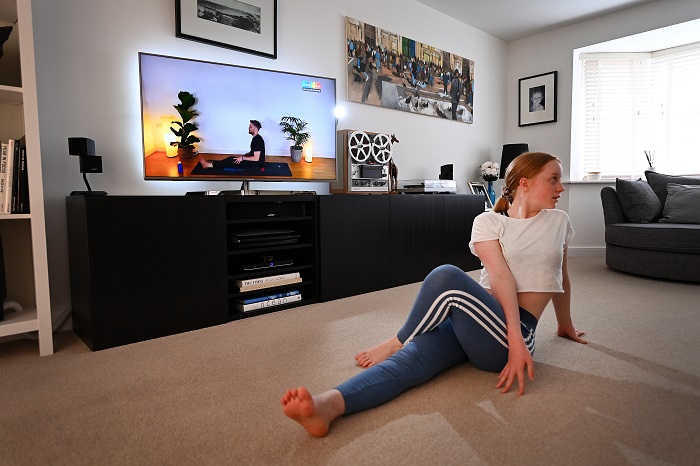Why Virtual Wellness is on the Rise

Employers’ strategy for getting employees healthy during COVID: virtual fitness
While the coronavirus pandemic has put a spotlight on other aspects of wellbeing, notably mental and financial health, a handful of employers are making sure physical health stays in the spotlight, too.
“All the wellness dimensions—physical, financial, emotional, social and environmental—are interconnected, but physical wellness is an ideal starting point,” says Ann Wyatt, vice president of program management and engagement at HealthFitness, a wellness provider that worked with Best Buy and Molson Coors, among others.
Focusing on fitness is seen as a smart move during the pandemic, advocates note, giving employees an opportunity to be active, boosting their mental health along the way.
“Most of us realize that it feels good on so many different levels just to get moving—going for a walk, a run or taking a group exercise class. The transition to work from home was—and still is—hard,” Wyatt says. “Providing an outlet for employees to continue with their physical wellness is crucial and over time will likely have a positive impact on the other wellness dimensions.”
Regina Ihrke, senior director and wellbeing leader, North America, at Willis Towers Watson, agrees that wellness components have intensified due to the pandemic. “Leaders have been bold in redefining their organization’s purpose and their commitment to the health and safety of their employees, families and customers, which has put a laser focus on wellbeing,” she says.
Research from the consulting firm finds that 60% of employers are offering new easy-to-implement virtual solutions, such as online workouts, to support employees who work from home. Another 19% are planning or considering these solutions. Meanwhile, half promote healthy nutrition and weight management for at-home employees, and 25% are planning or considering adding such programs.
Turning to apps, platforms
Wellness companies like Wellbeats, which offer virtual wellbeing components and partner with employers to provide them as a benefit for employees, say they have seen a big uptick in employers using their tools since the pandemic began in March.
The platform offered access to their tools for free at the start of the outbreak, which prompted a big boost in interest. With those promotions, Wellbeats overall added 163,000 employees to its platform.
Biotech company Amgen, for instance, previously offered Wellbeats exclusively for remote workers, but expanded the program in wake of the pandemic. It had more than 4,000 downloads of the Wellbeats app in one week after expanding the program to all employees. Health and human services provider Maximus saw 4,768 employee logins and 10,048 class minutes in the first week of its Wellbeats launch in late April.

“They’re discovering the benefits of offering anywhere, anytime fitness content alongside nutrition resources for people who are doing more cooking at home or mindfulness classes for people who are feeling overwhelmed by everything that’s happening right now,” says Jen Zygmunt, Wellbeats’ chief revenue officer. In April, Wellbeats users recorded 5 million activity minutes, “double the 2.5 million minutes we see in a typical month,” Zygmunt says.
The classes have been a big hit with employees. They often are viewed as a way to normalize routines—and keep workers healthy—during the traumatic current situation.
Although coronavirus is to thank for a bigger transition to virtual fitness, chances are the trend will continue post-pandemic—especially as coronavirus pushes a bigger number of employees to stay remote.
“I envision this trend as having staying power,” HealthFitness’ Wyatt says. “Some of our clients will have a portion of their workforce that may continue working from home for the foreseeable future and value having the flexibility to offer virtual fitness solutions in addition to an on-site experience at the company fitness center.”
While COVID-19 is requiring the majority of employees to stay at home, company leaders increasingly say they likely will continue to embrace work-from-home options. For instance, data finds that 82% of company leaders surveyed by research firm Gartner say their organizations plan to permit employees to work remotely at least part of the time even after the COVID-19 pandemic.
Read the full article featured in Human Resource Executive (hrexecutive.com).